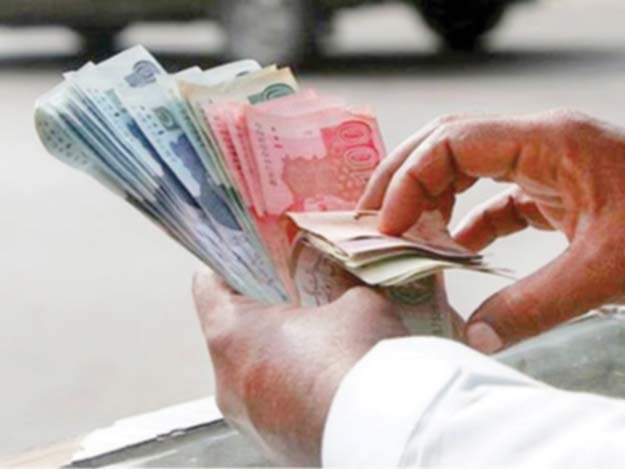
Since then, however, the deterioration in macroeconomic fundamentals has triggered a surge in public debt, which has more than doubled during the period FY08-14. Unlike the previous trends, when the size of external debt required decisive steps to resolve the problem, the current risk is originating from the country’s domestic debt as the government has more recently decided to shift its re-profiling strategy from short- to long-term borrowing.

Unlike the pre-9/11 debt problem that manifested primarily on the country’s balance of payment (BoP), the high dependence on domestic debt today is aggravating the fiscal outlook. This is because the surge in debt servicing, which is not supported by a corresponding improvement in tax revenues, is leading to large fiscal imbalances that have to be financed from domestic sources. Resultantly, Pakistan today is approaching the situation of a debt trap, where the government is meeting its debt servicing requirements by borrowing more.
Typically, banks purchase government securities in the time of recession while waiting for attractive loan opportunities to develop. In the recent episode, we have witnessed a bizarre buying spree of government securities by banks which suggests that this period has indeed been fairly unusual.
During CY14, the single most important development was the significant substitution of short term debt (T-bills) with medium to long term debt (PIBs). With an unprecedented increase of Rs1.9 trillion in FY14, the share of permanent debt has jumped to 37.1% by end-FY14, from only 22.8% a year before, according to the State Bank of Pakistan’s report.
It is important to note that the aggressive bidding in PIBs was largely financed by maturing T-bills, which pushed PIBs holdings by banks to a record high. As of end FY14, commercial banks were holding more PIBs (Rs. 2,171 billion) on their books than T-bills (Rs. 1,603 billion). Given the short term nature of banks deposits, the surge in banks PIBs holdings has implications for the maturity risk currently run by commercial banks in Pakistan, the same predicament that triggered the Russian financial crisis of 1998, Argentinian economic crisis of 2001 and more recently the Greek depression of 2012.
Are we in a recession already?
There are several possible reasons for the recent sharp increase in government securities holdings. First, the slow pace of the economy and a widespread deleveraging of corporate balance sheets could have weakened the demand for business loans. Second, the sustained steepness in the term structure may have made longer term Treasury securities a relatively more attractive investment than bank lending. Thirdly, new bank risk-based capital standards may have raised pressures on banks to increase their capital and shift assets toward lower risk categories.
While these changes have improved the maturity profile of the country’s domestic debt and reduced government exposure to rollover and re-pricing risks, its cost in terms of higher interest payments entails a fiscal burden in the future. It is important to note that interest payments have already emerged as a major drain on scarce fiscal resources.
The “lock-in” effect
Banks that hold government securities when rates are relatively low may be unwilling to liquidate these instruments when rates rise as they would realise capital losses from the sale. And with their funds tied up in securities, these banks would have to raise deposits and capital to make new loans (loanable funds), an additional cost that could reduce their incentive to lend.
The SBP issued a report on March 3, that showed the government has already borrowed Rs959 billion through scheduled banks in just eight months and is set for an additional borrowing of Rs1.5 trillion in the next three months through bonds and bills. This huge borrowing reflects the poor health of our budgetary fiscal affairs and has practically pushed out the private sector from the banking system.
Way forward
Without a single doubt, Pakistan is in shambles of an effectively nasty debt-deficit spiral. The challenge now is with Pakistan’s domestic debt, which is putting immense pressure on the fiscal side. Although preliminary steps have been taken to reduce subsidies and increase fiscal revenues, one must realise that the external debt restructuring in late 2001 entailed write-offs and a reduction in the net present value of Pakistan’s external debt.
Unless very ambitious fiscal reforms are undertaken that can guarantee results, the country’s domestic debt dynamics will not converge until administrative measures are adopted.
In this regard, while the IMF program should help contain the stock of domestic debt, the real solution to this issue is sustained economic growth, which will not be achieved by choking loanable funds in the banking industry.
The writer is an alumnus of Manchester Business School and currently working as a money market dealer
Published in The Express Tribune, March 16th, 2015.
Like Business on Facebook, follow @TribuneBiz on Twitter to stay informed and join in the conversation.








1719053250-0/BeFunky-collage-(5)1719053250-0-270x192.webp)








COMMENTS (2)
Comments are moderated and generally will be posted if they are on-topic and not abusive.
For more information, please see our Comments FAQ